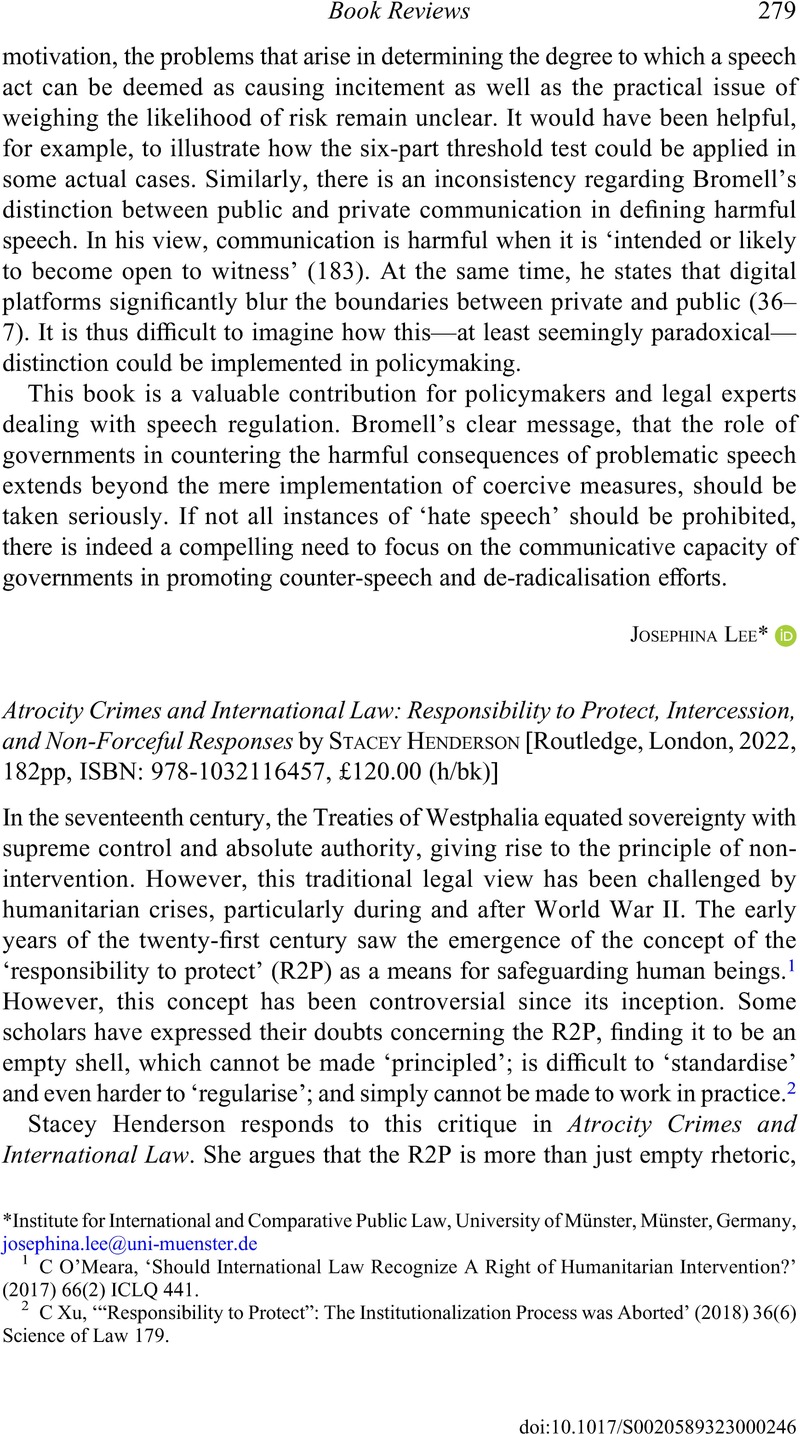No CrossRef data available.
Published online by Cambridge University Press: 17 November 2023

1 O'Meara, C, ‘Should International Law Recognize A Right of Humanitarian Intervention?’ (2017) 66(2) ICLQ 441CrossRefGoogle Scholar.
2 Xu, C, ‘“Responsibility to Protect”: The Institutionalization Process was Aborted’ (2018) 36(6) Science of Law 179Google Scholar.
3 Deng, FM et al, Sovereignty as Responsibility: Conflict Management in Africa (Brookings Institution Press 1996)Google Scholar.
4 Cheng, L and Cheng, W, ‘Legal Interpretation: Meaning as Social Construction’ (2012) 192(1/4) Semiotica 427Google Scholar.